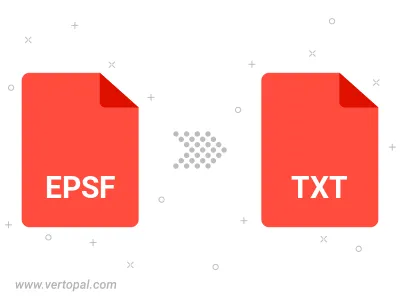Convert EPSF to TXT BRAILLE
Convert EPSF images to TXT BRAILLE format, edit and optimize images online and free.

An EPSF, or Encapsulated PostScript File, is a graphics file format used primarily in the publishing and printing industries for embedding high-resolution images within other PostScript documents. Introduced by Adobe Systems in the late 1980s, EPSF files enable seamless integration of complex visual elements, maintaining quality and device independence. They encapsulate both vector and raster graphics, allowing detailed illustrations and photographs to be embedded without loss of resolution, facilitating professional-quality output across various platforms and devices.
The TXT file extension, associated with "Unicode Braille", is primarily used for files with Braille Unicode characters, allowing for the digital representation and accessibility of Braille text for visually impaired individuals. Historically, the use of Unicode Braille in TXT files has evolved to support diverse linguistic characters and symbols, enhancing compatibility across different platforms and devices. This standardization has facilitated broader adoption and improved accessibility in computer technology.
Drag & drop or browse your device to select and upload your EPSF file.
Use the tools available for converting EPSF to TXT BRAILLE and click the Convert button.
Let the conversion process finish, then download your TXT BRAILLE image.

To change EPSF format to TXT BRAILLE, upload your EPSF file to proceed to the preview page. Use any available tools if you want to edit and manipulate your EPSF file. Click on the convert button and wait for the convert to complete. Download the converted TXT BRAILLE file afterward.
Follow steps below if you have installed Vertopal CLI on your macOS system.
cd to EPSF file location or include path to your input file.Follow steps below if you have installed Vertopal CLI on your Windows system.
cd to EPSF file location or include path to your input file.Follow steps below if you have installed Vertopal CLI on your Linux system.
cd to EPSF file location or include path to your input file.